The New Gastronome
Behind your Daily Cup
Step by Step to Specialty Coffee
by Gabriela Montañez
by Gabriela Montañez
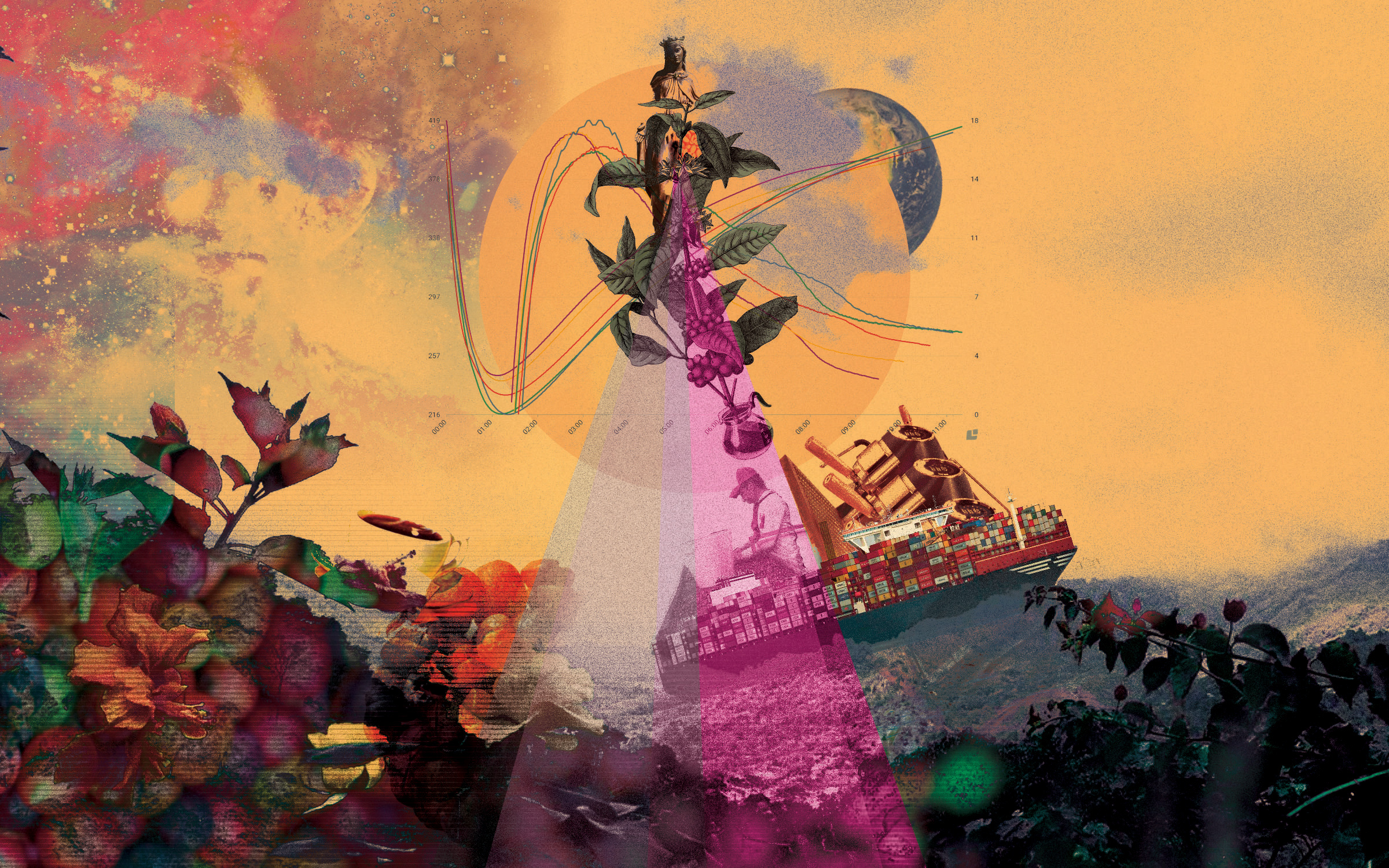
For you to have your daily cup of coffee, a long process of transformation needs to take place. Think about it. Coffee beans come from a tropical plant, called Coffea. It is an agricultural product that only grows in countries within the Coffee Belt (between the Tropic of Cancer and the Tropic of Capricorn), far away from Europe.
One of the main problems of the coffee industry is its lengthy value chain, which makes it easier to underpay coffee producers and other workers. Be honest, from the $1,50 you pay for your morning espresso, how much do you think the producer receives? Let’s break it down!
Producers and Pickers
In these tropical countries, producers and pickers work carefully and with great dedication to cultivate, harvest and process the best cherries.
During my last trip to Colombia, I visited some coffee producers in Antioquia, a well-known coffee-producing region in the country. Diofanor Ruiz, from Café La Promesa, performs agroforestry on his farm, focusing on high quality. He processes around 1800 kilos of coffee in one harvest – a number, way below the “acceptable” quantity of 4020 kilos, decided by the Federación Nacional de Cafeteros. The reason for this lower quantity is that, unlike his neighbours who work with monoculture, Diofanor also grows other varieties of trees like plantains and oranges, and maintains part of his farm as a natural forest. For Diofanor to be able to make a profit, he has to sell the parchment coffee1 at a price of $7,60 per kilo – a significantly higher amount than what has been established by the New York Stock Exchange in October 2020, $2,34 per kilo.
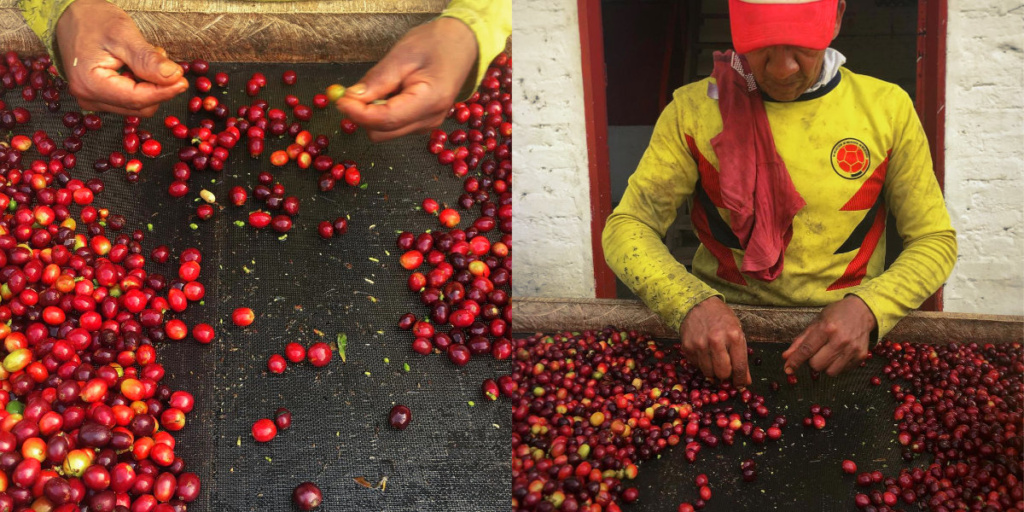 Coffee picker in Quindio, Colombia. Photo ©Gabriela Montañez.
Coffee picker in Quindio, Colombia. Photo ©Gabriela Montañez.
But, don’t forget about the pickers! In Colombian commercial coffee cultivation, they earn around $0,2 per kilo of harvested cherries. While this depends on many variables, they are normally capable of collecting around 30 to 50 kilos per day, earning an average picker an amount of $6 to $8 per day. For this reason, it’s important that a more sustainable coffee production also provides better work conditions for the pickers. Regarding this, Diofanor follows an interesting and different approach: he pays the pickers not by the quantity of harvested cherries but at a fixed rate of $13 a day.
A. D V. E. R. T. I. S. I. N. G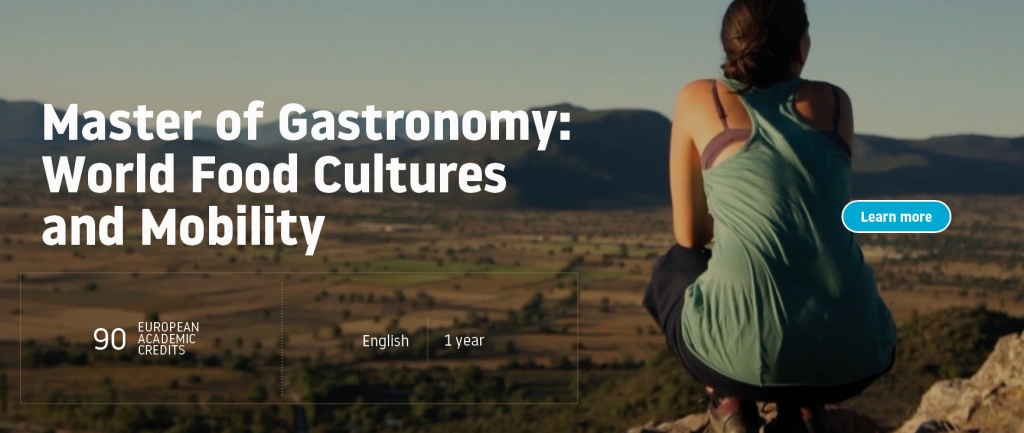
Being aware of these realities, it is important to be educated on the answers to questions like “Where does this coffee come from?”, “Which type of agriculture was used to cultivate it, was it monoculture or shade-grown?” or “How much were the producer and the pickers paid?”
Green Buyers
Far away from the coffee-producing countries, the green buyers or importers who search for the type of coffee that best suits their market and to bring the beans a bit closer to your daily cup. Their job is extremely important as they connect two different realities, the origin and the market. It’s easy to think that the green buyers do the fun part of the job: they travel around the world, meeting producers and tasting different coffees. “Who wouldn’t want that for a job?”, you might ask. Well, not everything is as shiny as it seems and most of their job is not that “fun”. They have to do a lot of “back-office work”, following deadlines, especially because each country’s harvest season is so different. To do a good job, green buyers need extraordinary organisational skills, as they have to plan their trips way in advance, so as not to miss a good opportunity during the couple of weeks they will be with the coffee producers. Therefore, some of the tasks they have to fulfil are to prepare a buying strategy, record as much information, taste way too much coffee in one day, search for possible clients, negotiate and contract prices and place an order before the coffee gets sold to another buyer. They also manage and follow the shipments of coffee samples. Quite a stressful job, don’t you think?
Nordic Approach is a good example of a sourcing company that works with Specialty Coffee. Their warehouse is in Belgium but they are present in different countries around the world. Two years ago, during the Berlin Coffee Festival, I met Jamie Jongkind, who manages their sales and sourcing. Talking to him, their passion for high-quality coffee, their dedication to improving the coffee market and their transparency were highly noticeable and really inspiring.
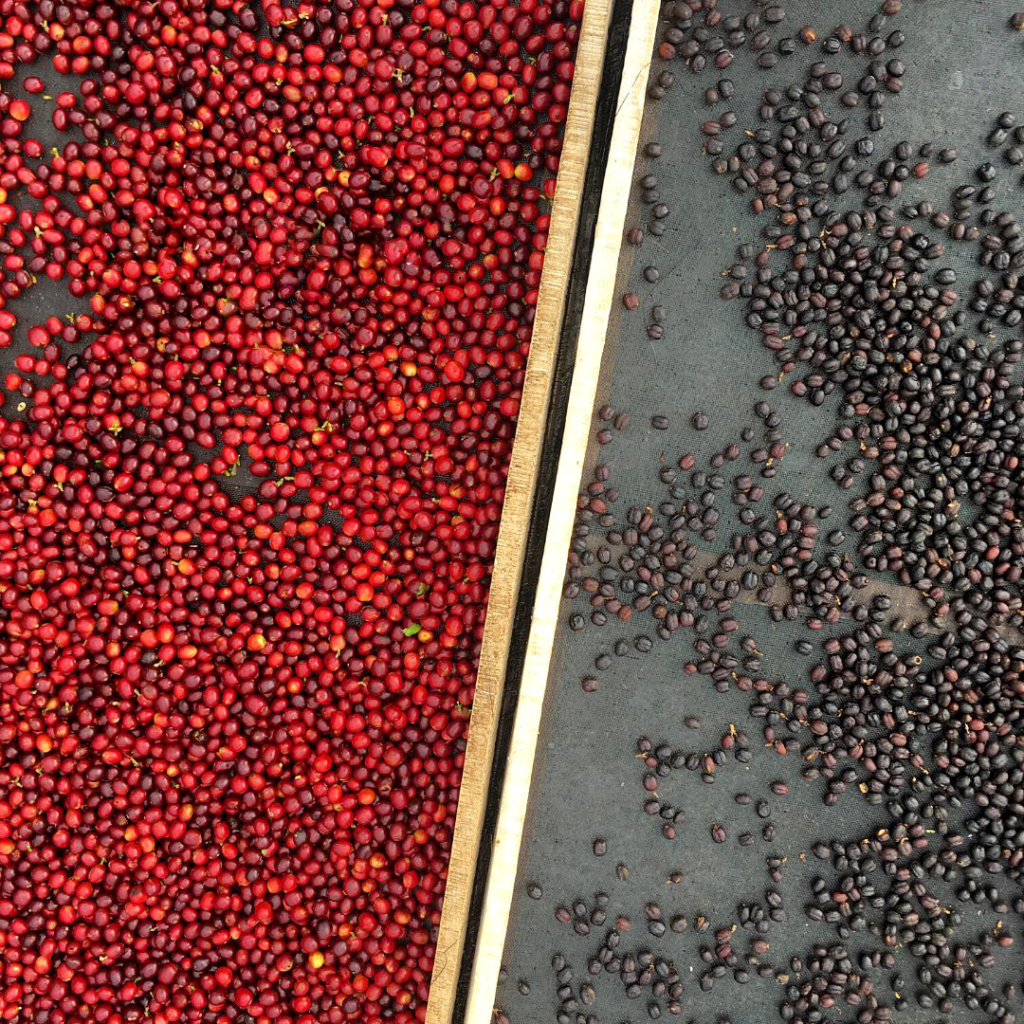 Red cherries (left) and fully dried cherries (right). Drying process before the cherries are hulled to separate the beans from the skin. Photo ©Gabriela Montañez.
Red cherries (left) and fully dried cherries (right). Drying process before the cherries are hulled to separate the beans from the skin. Photo ©Gabriela Montañez.
So, next time you have a cappuccino and want to know a little more about the drink you are having, you might ask about the importer of the beans used for your coffee.
Roasters
The next appearance in the coffee chain is made by the roasters who – with their knowledge, preferences and experience – transform the green coffee into roasted coffee. They are like the cooks in this caffeinated story, upholding big responsibility to exalt the aromas of the beans and to make the producers’ and pickers’ hard work worthwhile.
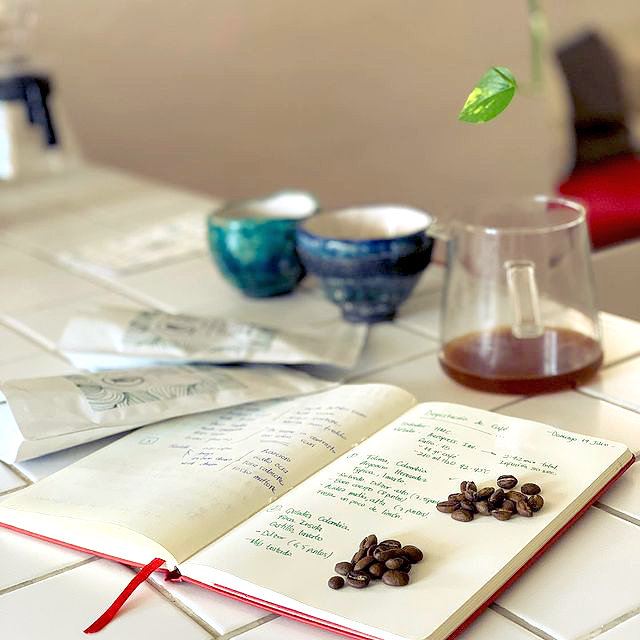 Two Colombian coffees from different regions (Tolima and Quindio) and different varieties (Typica and Castillo) but same process method (washed). Photo ©Gabriela Montañez.
Two Colombian coffees from different regions (Tolima and Quindio) and different varieties (Typica and Castillo) but same process method (washed). Photo ©Gabriela Montañez.
As the art of cooking consists of different recipes and techniques, so does coffee roasting. There is not just one way to roast all coffee. If you think about it, there are different coffee varieties and they all come from different territories, altitudes, climates and soils. Each coffee is, therefore, different and even if it’s produced by the same farmer, it might still vary from harvest to harvest. For this reason, roasters have to conduct many tests in order to find and decide on the roasting profile that fully exalts the aromas of each coffee variety. They have to evaluate many variables, such as the bean humidity, it’s density, the temperature inside the roaster, the roaster’s drum speed, the room temperature, and many more. Even just one variable can change the result to something completely different. For these tests, roasters have to “invest” a part of the coffee they bought and won’t be able to sell it at the same price as the coffee that will be roasted with the final perfect profile.
There is a science to coffee roasting, with many variables that can make each cup of coffee completely different. The roasting technique and the freshness of the coffee are important so you may want to know when and who roasted the next cup of coffee you are going to drink.
A. D. V. E. R. T. I. S. I. N. G.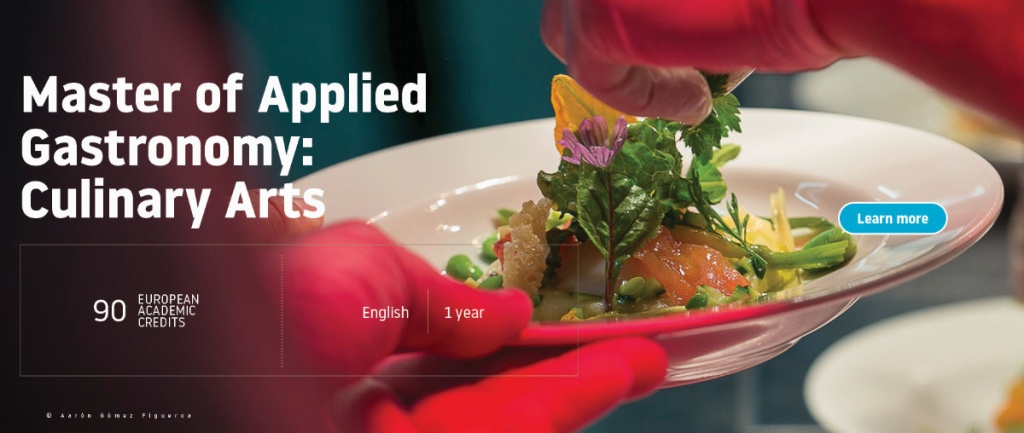
Baristas
Finally, we get to your cup of coffee and here the baristas come into play, who have the job of extracting the flavours and aromas in the best possible way, giving value to all the people behind the drink. Things don’t get any easier at this stage as the baristas’ work also requires innumerable tests. Which coffee extraction method amplifies the sweetness of natural Colombian coffee best? What about the ratio between coffee and water? And the water temperature? Baristas have to think about all of it while also maintaining the efficiency of their coffee shop.
A good example is Bottega delle Delizie in Bra, Italy – the town where the Slow Food movement was born. Paolo Panero is the perfect example of a barista’s true passion and curiosity towards coffee. And it’s clear that what differentiates the best baristas is exactly that, their passion for this agricultural product. None of this can be done if they don’t really care about coffee or if they are not curious enough to conduct different tests and keep improving time and time again.
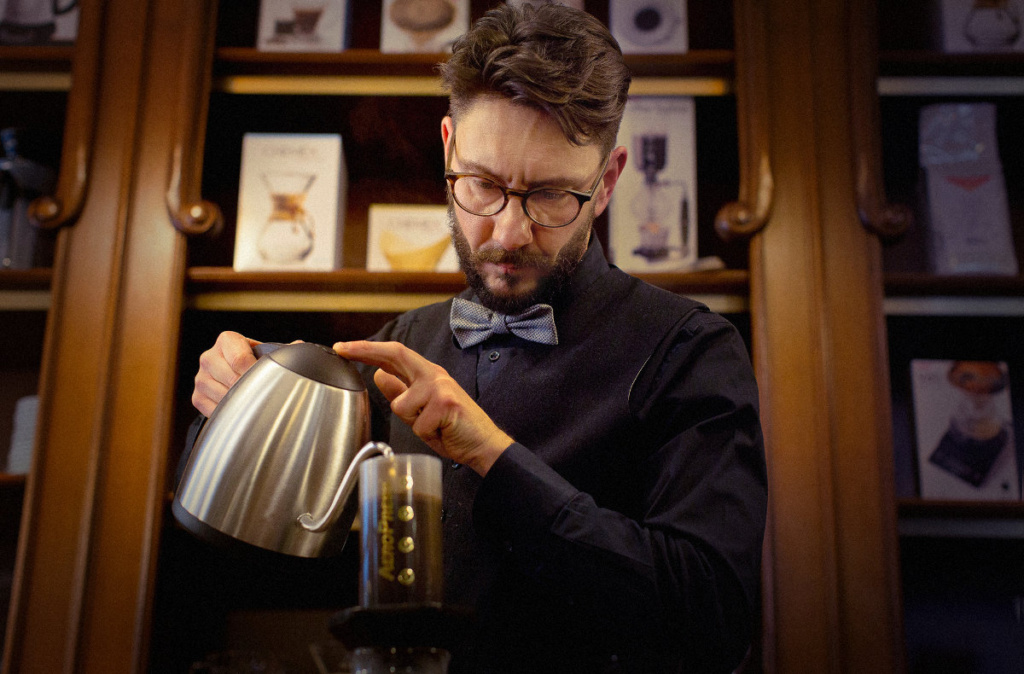 Paolo Panero at the Bottega delle Delizie. Bra, Italy. Photo ©Aarón G. Figueroa.
Paolo Panero at the Bottega delle Delizie. Bra, Italy. Photo ©Aarón G. Figueroa.
Unfortunately, some people still approach the Specialty Coffee industry with the same mindset as the “commercial” one. Let’s be sincere, there have always been some businesses who have promoted themselves as working with Specialty Coffee, even though the “specialty” part has always been very questionable. Good communication and attractive images don’t make your coffee Specialty Coffee. And yet, people might see an opportunity in this smaller market, where customers are more likely to pay a bit more for quality. Without the passion and curiosity necessary, though, they will not make it far in the world of Specialty Coffee, as a missing understanding for the producers and countries the coffee is coming from or a lack of interest in testing for the perfect roasting profile, will end up giving the coffee less value than it deserves.
But, what is Specialty Coffee?
On the one hand, Speciality Coffee can be seen as a philosophy among coffee professionals along the supply chain to give quality the highest priority. The non-profit organisation SCA (the Specialty Coffee Association), is “dedicated to building an industry that is fair, sustainable and nurturing for all2”, testing, grading and scoring green coffee samples for better classification. This is done through a technique to measure, identify and analyse the coffee’s sensations, better known as “cupping”, where coffee is scored for aspects like cleanness, aroma and flavour. A Certified Q Grader detects defects and determines the quality – as I said, it’s all about quality here. The SCA scores Arabica coffees on a 100 point scale. For a coffee to be considered “specialty” it has to have 80+ points. Below 80 points (and no lower than 60 points) we are talking about “commercial” coffee.
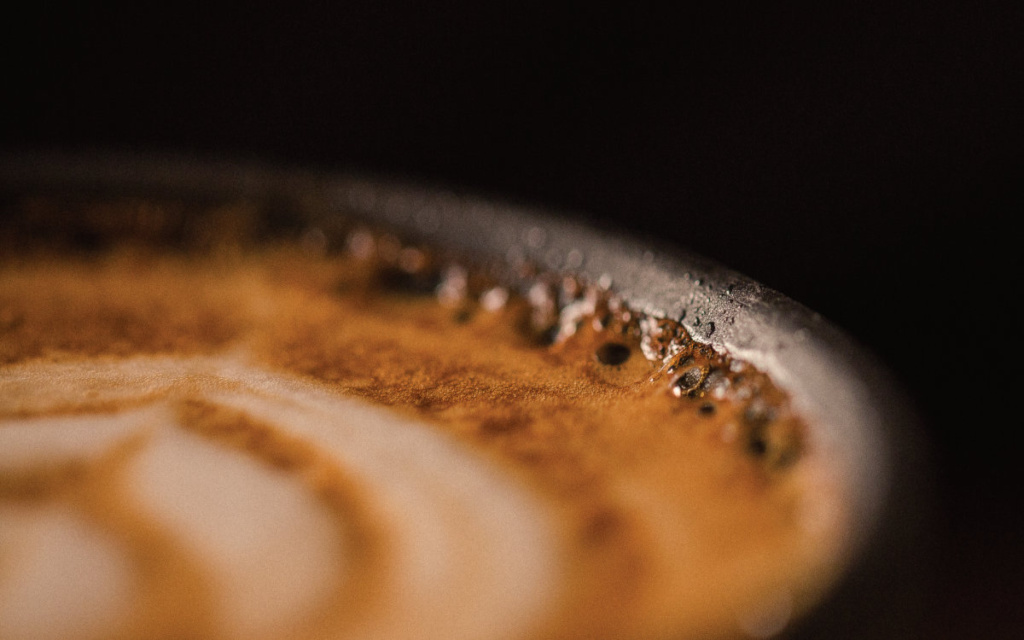 Flat white coffee at the Bottega delle Delizie. Bra, Italy. Photo ©Aarón G. Figueroa.
Flat white coffee at the Bottega delle Delizie. Bra, Italy. Photo ©Aarón G. Figueroa.
But the quality can change. As you can see, coffee production is a long and hard process with many people involved. When one of those doesn’t perform their job as well as it should be done, we risk damaging the coffee quality. Imagine, if the producer spent tons of hours and resources to process a coffee of 85 points. The importer recognizes the high quality of these beans and decides to invest and manage the transportation from one continent to another. Then, the roaster doesn’t roast the coffee properly and you end up drinking an 85 points coffee (“specialty” at the beginning) but with ashy notes, if the coffee is over-roasted, or cereal aromas if the coffee is underdeveloped (not “specialty” anymore). The same, of course, could happen if the barista doesn’t extract your cup of coffee properly.
It’s a Limited World
The information and science available in the coffee industry are still limited. If you want to become a Certified Q Grader or even if you want to take some courses on roasting and barista skills, the investment you’ll have to make is quite high for the number of hours you actually get in the program. For this reason, it’s very important that whoever enters the Specialty Coffee world as a professional, starts this path with passion and curiosity. If a barista or a roaster is curious enough, she or he is more likely to pick up the tools and acquire the skills needed to develop a better career.
If you want to be a more conscious coffee consumer start reading more about Specialty Coffee and coffee production in general. It’s important to start asking some questions regarding your daily cup of coffee and, what better person to ask than your favourite barista or coffee shop owner?
Passionate people working in the coffee business are happy to share their knowledge and answer your questions. One of the best things about Specialty Coffee is the people behind it and, being still a small industry, it’s easier to learn some basic roasting or brewing tips from others in the sector. Specialty Coffee is a good point to start but we should go beyond. We should be critical-minded consumers and ask questions to both the professionals in the sector and to ourselves.
Do you already have the answers to all the questions I asked throughout this text? Do you know everything there is to know about the cup of coffee you had today? Remember, coffee is an agricultural product and just because the beans used for your cup of coffee might have been graded with more than 80 points, it doesn’t necessarily mean you are drinking Specialty Coffee.
Footnotes
[1] Parchment coffee refers to the dried green coffee that has not yet been hulled.
[2] https://sca.coffee/about